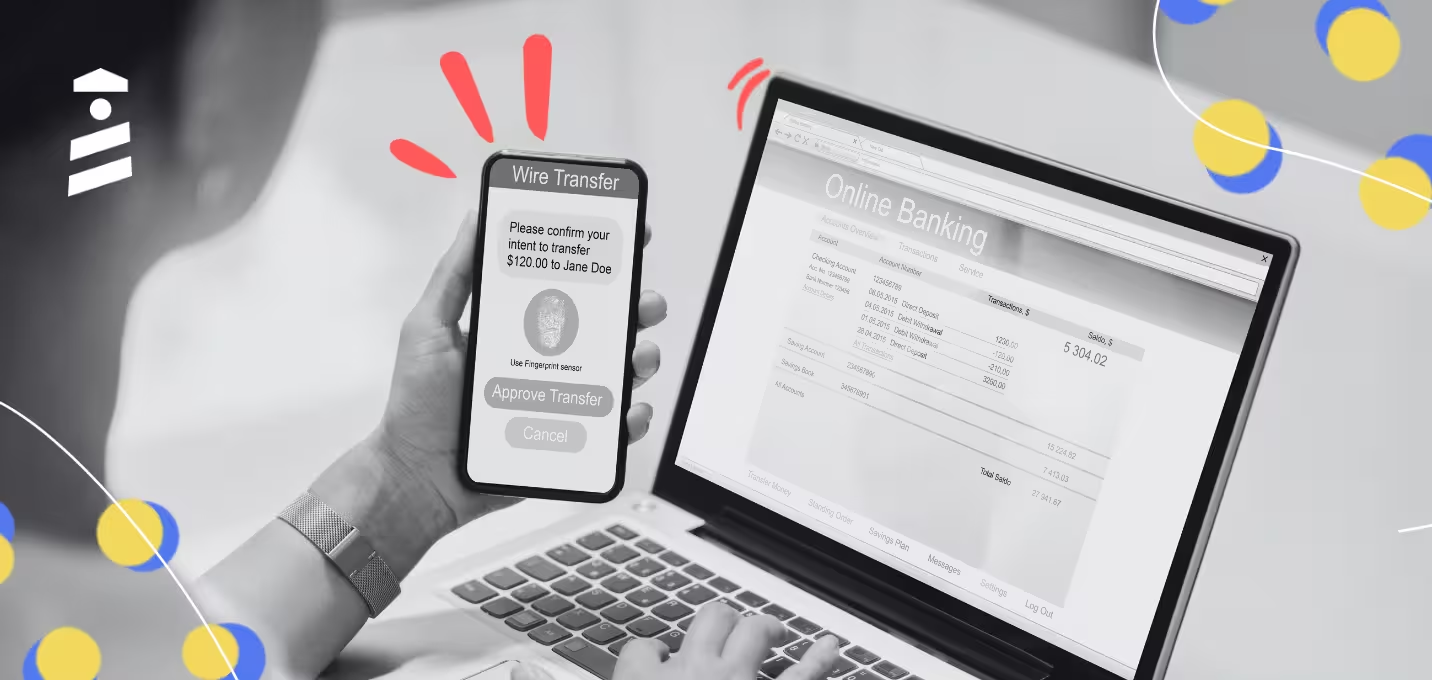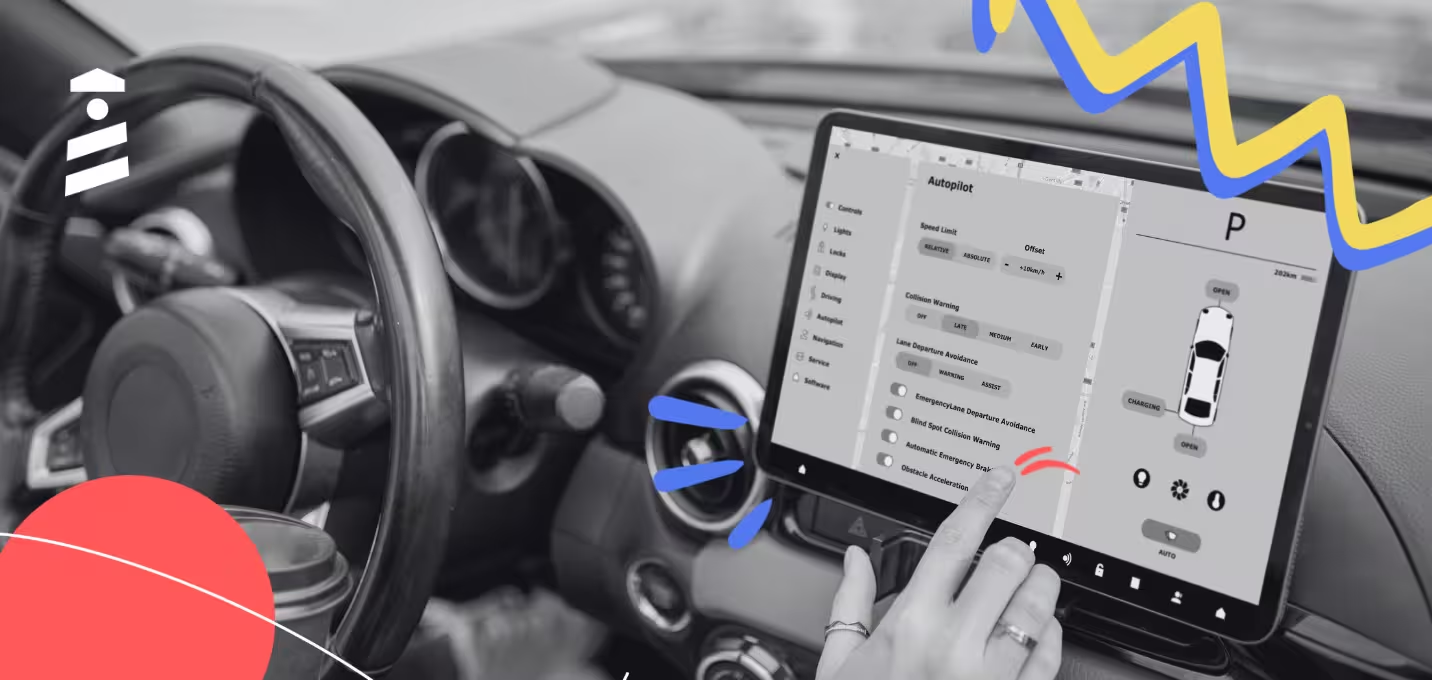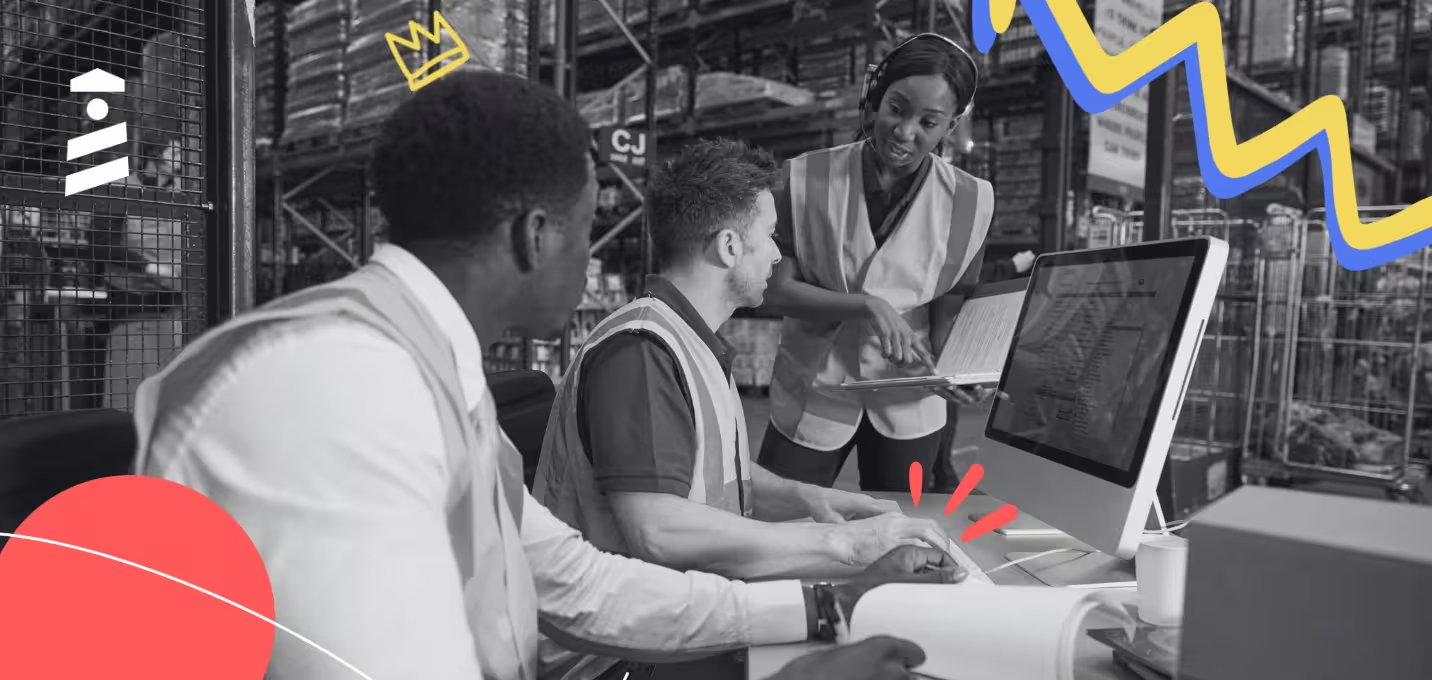

When was the last time you said...
“So THAT’S how this works!”
Now hold on to that memory – because that was what we call an “aha!” moment.
Although the concept of an aha! moment (sometimes thought of as a Eureka moment) has been around in psychology for a while, the idea of an aha! moment in SaaS is relatively new.
Here at UserGuiding, it's something we're passionate about, because we LOVE it when our clients help their customers achieve an aha! moment of their own.
So in this article, we'll talk about:
- What an aha! moment really is,
- The psychology behind it & why it matters,
- Some of the best examples of aha! moments from SaaS products, and
- How you can find your own aha! moment in your product,
Don't have time to read the full article? Here's the TL;DR and our quick YouTube video that covers it all ⬇️
TL;DR
- An aha! moment is a milestone in the user journey where users come across a proposed value and realize the worth of your product.
- The science behind aha! moments heavily depend on user emotions and brain systems, and Daniel Kahneman's System 1 & System 2 show further that aha! moments are essential.
- Some of the best aha! moments from famous products include Facebook, Twitter, Slack, and Trello.
- You can find your aha! moment(s) in 3 steps: First, gathering data from user feedback, interviews, and usability testing. Then, you can pick which moments your users suggested are worth considering as aha moments, and finally, you can use A/B testing or product experience tools to see results and optimize.
Now if you're ready, let's dive back in with some definitions ✍️
What is an “Aha!” moment?
An Aha! Moment, in tech terms, is a milestone in the user/customer journey where the first-time users come across a proposed value, triggering a realization that the product at hand can be of value to them. An Aha! moment defines the entire customer journey by showing the users that your product is what they need often in the early onboarding process and, thus, drastically helps the user lifecycle, conversion rates, and customer retention rates.

Now, although Merriam-Webster defines aha moment clearly, and so did we, it's not actually such a simple phenomenon.
But that doesn't mean it cannot be defined.
We can generally recognize when an aha moment has happened to us; remember when I asked you to hold on to a specific moment at the start?
“They are the accelerators of the possibilities, they dissolve boundaries and make us see things differently. Once a mind has been stretched by one ‘Aha!’ moment, it can never go back to its original state.”-Ina Catrinescu, The Author of Burnout Breakthrough: Motivating Employees with Leadership Tools That Work
“Aha!” moments are the steps on the staircase of progress.
And it is the reason why you are continuing to read this blog article; you know the aha moment is close - even when you are skimming!
But here's a hypothetical aha moment example before we set out for the rest of our guide:
An Aha moment example from a Food Delivery App

Why Aha! Moment Matters & The Science Behind
By now, we know that Aha! moments are all about emotions.
And that is reason number one it matters.
Truth is, every product roadmap element that enhances your user experience, convinces users to convert and be active users, and keeps the user lifecycle moving depends on user emotions.
And an aha moment is one of the best methods to get users feeling some positive emotions.
Remember: users are skeptical.
You have to turn the tide on users who are thinking very critically of your product.
So you gotta know your emotions ⬇️
Emotional Reaction
If you are familiar with the concept of emotional bias - that we are cognitively prone to make decisions according to whether we like or dislike something - you would know that:
Aha moments decide whether the emotion is positive or negative.
For example, let's take Twitter.
When you first signed up, you might have been skeptical, but when you got that first notification saying, “Someone retweeted your post!” at that exact moment, your brain released dopamine, oxytocin, serotonin, and probably a bit of adrenaline as well.
You know, all the chemicals that make us feel good and give a motivation to keep going.
Sometimes the effects of such a feeling are so strong that it drives our behaviors and decision-making.

And “Aha!” moments are such moments that make a user decide to employ a product.
And if we deep-dive into cognition, we can refer to another argument many marketers and product managers are familiar with:
The Two Systems of Thinking proposed by Daniel Kahneman 🧠
Now, Kahneman's model is pretty interesting, but if we were to say it all in short, there are two active systems that work our brain:
- System 1 is automatic, fast, intuitive, effortless, and subconscious, relies on emotions and biases
- System 2 is manual, slow, deliberate, controlled, and self-aware, relies on calculations
So then, which one is gonna be the one that works when judging your product, you might ask.
The answer is... Both!
Though System 1 is always working, in choosing to use or drop a product, both systems have a say.
However...
👉 You have to appeal to System 1 with a good series of aha moments to get System 2 to consider, and that makes Aha moments very precious for a frictionless onboarding process and overall user experience.
It’s all about perspective
The beauty behind the concept of the Aha moments is that they can be unique and subjective while occurring at very different stages of the customer lifecycle.
And at each, a wide range of different emotional reactions can be achieved.
With each aha moment milestone, users gain a deeper understanding of how they can make use of your product and the different ways in which they can find value.
It's saying "use my product" without saying it but making them feel they should.
Now, using quantitative indicators to measure and track the occurrences of the Aha moments may seem to contradict the nature of an Aha moment, but they are the best-proven ways to utilize this concept as a hint to steer the growth operations in the right direction.
For example, Facebook users don’t say “Aha!” when they add 10 friends in 7 days.
But Facebook uses this as their Aha moment because they know that if a user adds 10 friends in 7 days, they understood the value of the product and started achieving value with it during that period.
And so the Aha moment becomes measurable.
Talking about Facebook, let's take a closer look at the real-life examples of clever aha! moments ⬇️
Top 6 Aha Moment Examples in SaaS
Although the very best products out revamp their aha moments as well as their customer journey map in regular intervals, we have some cool examples of how some of our best products got their users saying - AHA!
Here are a couple of my personal favorites 👀
1- Facebook Aha Moment Example

- A user connects with 10 people within the first 7 days of signup.
👉 Facebook’s Aha moment is great because it pushes for early product adoption while keeping it to a reasonable amount of friends added for long-term user retention.
2- Twitter (X) Aha Moment Example

- A user follows 30 users, with at least 1/3 of them following back.
👉 Though Twitter's onboarding doesn't necessarily push for this aha moment, we can see that the follow-back detail makes sense for users to see the real value of Twitter - an affirmation of the users' personas.
3- Prisync Aha Moment Example

- A shop owner makes a profit with a better price offer.
👉 Prisync’s aha moment is great because they push the user to achieve value with the product and the users not only experience the aha moment but also reach the end-goal with the product - profit.
4- Slack Aha Moment Example

- A team sends 2000 messages in a workspace.
👉 Slack’s aha moment is great because, by the time the team reaches 2000 messages, they’ve adopted the product. And with Slack being a rather simple tool in its value, we can see that 2000 is the right number with even a team of two.
5- Dropbox Aha Moment Example

- A user saves 1 file in a folder on 1 device.
👉 This is a rather quick aha moment that requires less effort than most, but since it works, it’s also effective. Again, Dropbox's value proposition leans to the simpler part of the spectrum; thus, so is the aha!
6- Trello Aha Moment Example

- A user moves a card from one stack to another.
👉 This is probably the quickest aha moment on our list, but it is still a great one because Trello focuses its value on the flexibility and agility of Kanban boards, and one interaction is enough for users to see the value.
Now that you've seen some meaningful examples, you might be wondering, "How the hell do I find my own aha moment?!"
Well, let's figure that out for you ⬇️
How to find your Aha moment in 3 steps
We know that we humans are inherently innovative.
If we weren’t, we would all be living in caves as our ancestors did 40,000 years ago.
One of the things we need to question is:
Are there ways to make innovation easier and occur more frequently?
Is there a way to take those aha moments that seem to happen randomly to have them intentionally?
Drumrolls... 🥁
Yes, there is!
Now let me warn you in advance, aha moments are completely unique to different products and situations.
They depend on so many different things, from your user base and user segments to the nature of your product.
But there is a 3-step gameplan that can apply to many ⬇️

1- Research - Collect Data First
Now here's the thing:
You can’t magically come up with your Aha moment.
You need to work and find it.
But first, you need to know where to look for it.
So, start by digging into the user analytics tools you use and put all the data related to the user journey on the product.
This won’t be easy if you are not collecting valuable data already, and if you don’t have it yet, you might wanna set up product analytics first.
But if you got the data at hand (respect 🫡) let's get down to ⬇️
👉 Find out what retaining customers did in common
This here, folks, is where the general outline of your most important aha moment is drafted out.
Go through the journeys of your most loyal active users to see what they did in common during their initial experience with your product.
You are looking for the points where your users were activated.
Here's our guide to user activation 👈
You think you got it? But hey, this is just the start.
But here's the twist:
Finding what active users did in common is way too easy.
🟢 I could guess without data as a retained customer of Spotify that their aha moment is when a user likes 100 songs or creates a playlist.
🟢 Or, as a retained customer of AirBnB, I know that it's the first booking.
But if I were to ask Spotify or AirBnB, there is very possibly some pore pizazz to it.
So off we go, looking into the other side of the coin ⬇️
👉 Find out what churned users didn’t do
Now that you have what the active customers did in common, you have to repeat the same process for churned users.
A small warning ⚠️ Avoid considering users who have used your product for a long time and then churned.
You'll likely even find power users there who just had to switch.
What you want is the ones who said: "Nope."
The churn I talk about here must be in the first weeks, maybe even the first days.
Just go through the journeys of various churned users to establish a user journey for them.
Now, compare it to the journey you have prepared in the previous step. You can go ahead and underline the moments that are present in successful customers and don’t exist for the churned users.
We are getting close.
👉 Customer feedback, usability testing & user interviews – see what users have to say
Now hard data is important and reliable.
But getting the data straight from a user is usually more precise.
So why not include it in your research?
There are 3 ways to do so:
- User Feedback: To collect feedback that can pinpoint the Aha moment, you can just ask for it. Send out a survey to your existing users and ask: “At what moment did you understand and embrace the value of our product?”. Now, not all users will be aware of experiencing their Aha moments, but the answers from the ones who do will be valuable.
- Usability Testing: Conducting usability testing with a few numbers of users will be sufficient for you to get a grasp of the possible aha moments. Observe the user as they use their product for the first time and look out for changes in their emotions and the content of their comments. Take note of the moments where they say stuff like “Now I understand”, “OH!”, “Aha!” etc.
- User Interviews: Interviews with users is the next step in collecting user feedback, and this time, it promises extra valuable insights. The results, of course, depend on the types of users you choose to include and those who agree to contribute - there will be a big difference between what the power users and the rest of your user base will say. However, the material from this step is possibly the best for data collection.
Usability testing is also helpful for finding the pain points of users, which can harm their path to the Aha moments if they come before it.
If you’ve gone through all the 3 steps successfully, you have an accurate list of Aha moment candidates.
Let’s take action:
2- Come up with multiple aha moments
Remember the list we’ve created?
It’s time for you to gather your product team and go over the moments that could be the Aha moment of your business.
🚨 IMPORTANT REMINDER🚨
Don't just come up with one potential moment that lights a light bulb and call it a day.
If the list is long, they are all worth considering, and most, worth building as an aha moment. You will also need to have a backup moment in case the first one you try doesn’t work as the main one!
There are 3 questions to ask to find the right aha moments:
- Is the timing right? Could it be too late or early to be an aha moment?
- Is the moment easy enough for everyone to get to the "aha!" or is it too simple to bring users to a realization?
- Can it encourage retention while showing value and how the product works?
I want you to think this over and come up with the best 2-3 of them as primary and secondary aha moments.
Now, it's time for you to try them:
3- Test it in your user onboarding
And here comes the final step.
It's time to put the data and the moments you listed together to see how it works in real life.
A great strategy here is to build user onboarding experiences around the aha moments at hand for user testing.
Using interactive guides, in-app messages, and user onboarding checklists, you can easily push users to experience the aha moments and gather testing data quickly.
Highlight the shortest way to your Aha moment with UserGuiding 🚀
User onboarding tools like UserGuiding can help you figure out the fastest way to get your users to the Aha Moment.
You can use such tools to create various different flows (without needing code, by the way) that showcase your main value proposition using tooltips, hotspots, product tours or checklists.
(Try it here for free, if you don't believe me!)
Once you've created a few different onboarding flows, you should test them to see which one takes your users to the Aha Moment more efficiently.
There are 2 ways to test effectively:
👉 2 weeks each
You can test each flow for 2 weeks and get the data on the results.
Product experience and testing tools like Hotjar and Heap can be your biggest support at this stage.
👉 A/B Testing
Or, you can test each flow simultaneously with A/B (in this case /C might be included too) testing by dividing the new users into 2-3 groups and having them go through these different flows. There are many interactive product tour software that can help you do this.
This method might help you get quicker results with a smaller audience.
After you’ve chosen your test method and conducted the test, you’ll have the results.
At this point, the Aha moment for your product is clear.
If you have gone through each step carefully:
The Aha moment in the flow, which performed the best and resulted in more sales and product adoption, is your primary Aha moment.
Bonus: Enjoy the profits
An effective Aha moment will make you money as it will skyrocket free/trial-to-paid conversions and the possibilities of upselling.
All you have to do is use a good digital adoption software (like UserGuiding 🤫) to make sure aha moments are experienced right.
Then just sit back and enjoy the profits.
You deserved it!
To Wrap Up...
Aha! You made it.
If you're reading this, I hope you went aha! throughout the article. the truth is, an aha moment is highly dependent on the audience and the product at hand.
So if you don't think you've figured it out, don't worry!
Just go back, analyze your product and audience carefully, and you'll figure it out 🧩
Good luck in advance!
Frequently Asked Questions
What makes "Aha!" moments important?
A customer that reaches their "Aha!" moment right after acquiring the product is less likely to churn than the ones who don't.
How do I search for an "Aha!" moment?
Try finding out what your regular customers have done differently from the ones that churned by conducting in-depth research.
Which statistics can I use to find my "Aha!" moment?
Analyzing why customers retain, on what page they spent their time the most, how frequently they log in are some of the statistics you can use.

















.svg)
.svg)
.svg)
.svg)
.svg)

.svg)
.svg)












.svg)
.svg)




.png)

















